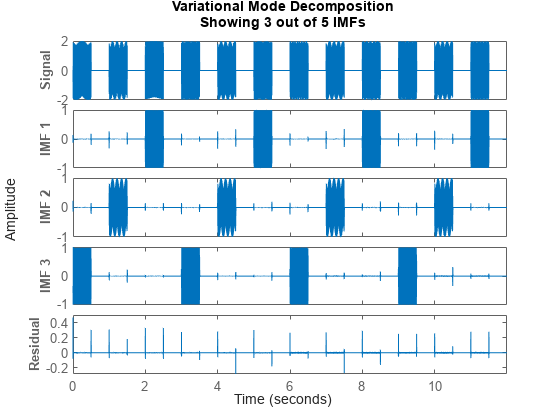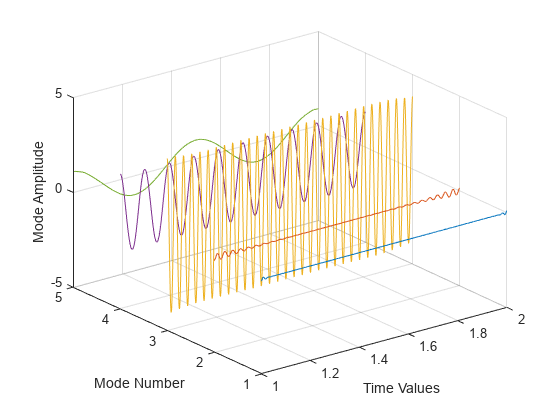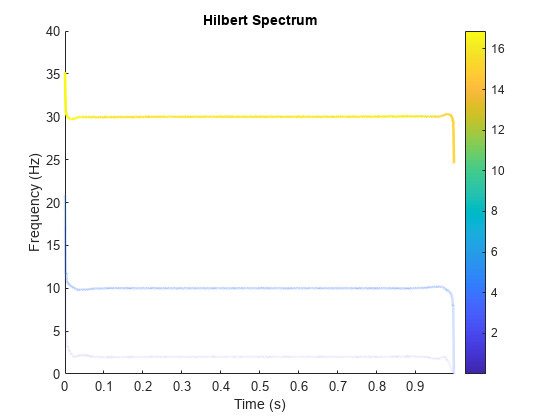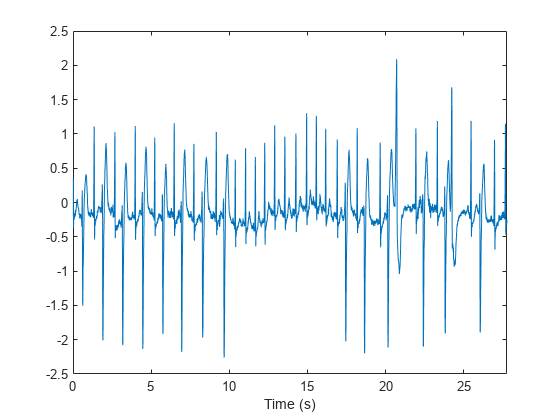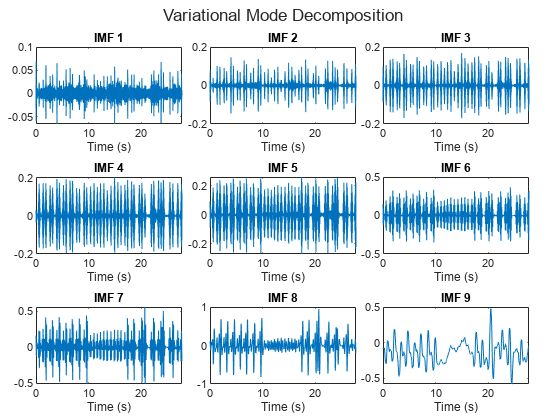vmd
Variational mode decomposition
Syntax
Description
[___] = vmd(
performs the variational mode decomposition with additional options specified by one or
more name-value arguments.x,Name=Value)
vmd(___) plots the original signal, IMFs, and the
residual signal as subplots in the same figure.
Examples
Input Arguments
Name-Value Arguments
Output Arguments
More About
Algorithms
The vmd function calculates the IMFs in the frequency domain,
reconstructing X(f) =
DFT{x(t)} in terms of Uk(f) =
DFT{uk(t)}. To remove edge effects, the algorithm extends the signal by mirroring half
its length on either side.
The Lagrange multiplier introduced in Optimization has the Fourier transform Ʌ(f). The length of the Lagrange multiplier vector is the length of the extended signal.
Unless otherwise specified in InitialIMFs, the IMFs are initialized
at zero. Initialize CentralFrequencies using one of the methods specified
in InitializeMethod. vmd iteratively updates the
modes until one of these conditions is met:
and are jointly satisfied, where εr and εa are specified using
RelativeToleranceandAbsoluteTolerance, respectively.The algorithm exceeds the maximum number of iterations specified in
MaxIterations.
For the (n + 1) -th iteration, the algorithm performs these steps:
Iterate over the K modes of the signal (specified using
NumIMFs) to compute:The frequency-domain waveforms for each mode using
where is the Fourier transform of the kth mode calculated in the (n + 1)-th iteration.
The kth central frequency using
Update the Lagrange multiplier using where τ is the update rate of the Lagrange multiplier, specified using
LMUpdateRate.
References
[1] Boyd, Stephen, Neal Parikh, Eric Chu, Borja Peleato, and Jonathan Eckstein. "Distributed Optimization and Statistical Learning via the Alternating Direction Method of Multipliers." Foundations and Trends® in Machine Learning. Vol 3, Number 1, 2011, pp. 1–122.
[2] Dragomiretskiy, Konstantin, and Dominique Zosso. "Variational Mode Decomposition." IEEE® Transactions on Signal Processing. Vol. 62, Number 3, 2014, pp. 531–534.
[3] Moody, George B., and Roger G. Mark. "The impact of the MIT-BIH Arrhythmia Database." IEEE Engineering in Medicine and Biology Magazine. Vol. 20, No. 3, May–June 2001, pp. 45–50.
Extended Capabilities
Version History
Introduced in R2020a
